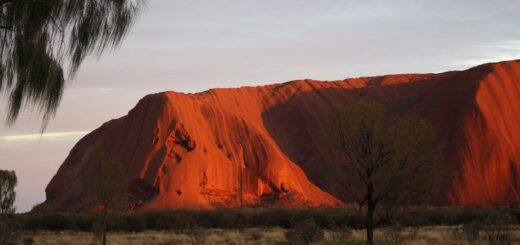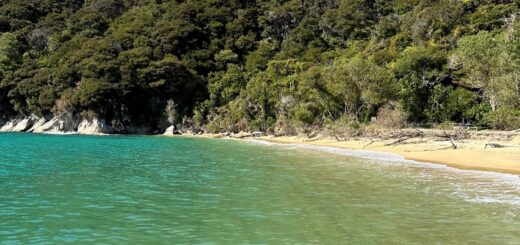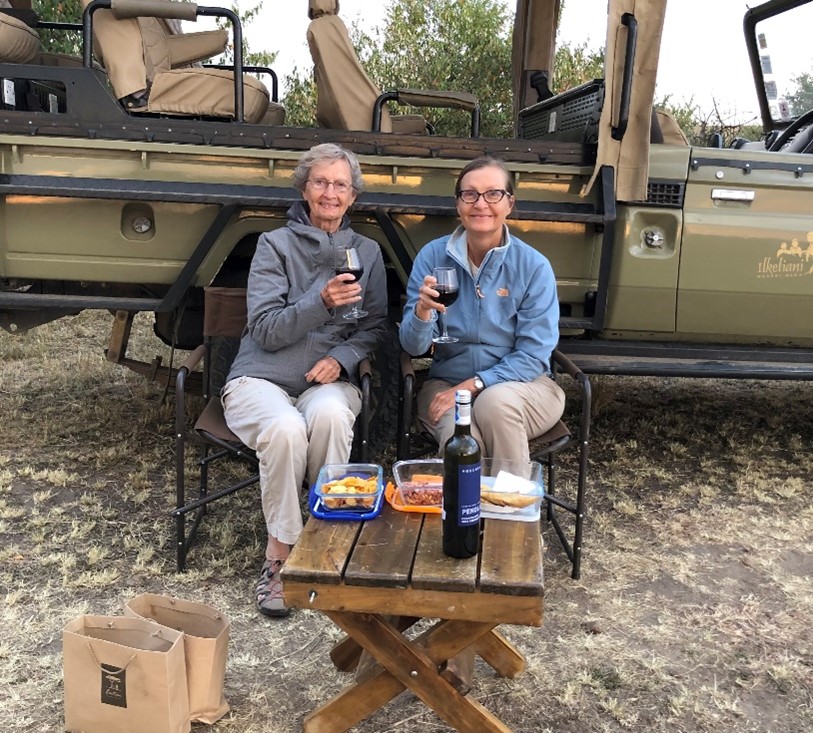Port Douglas
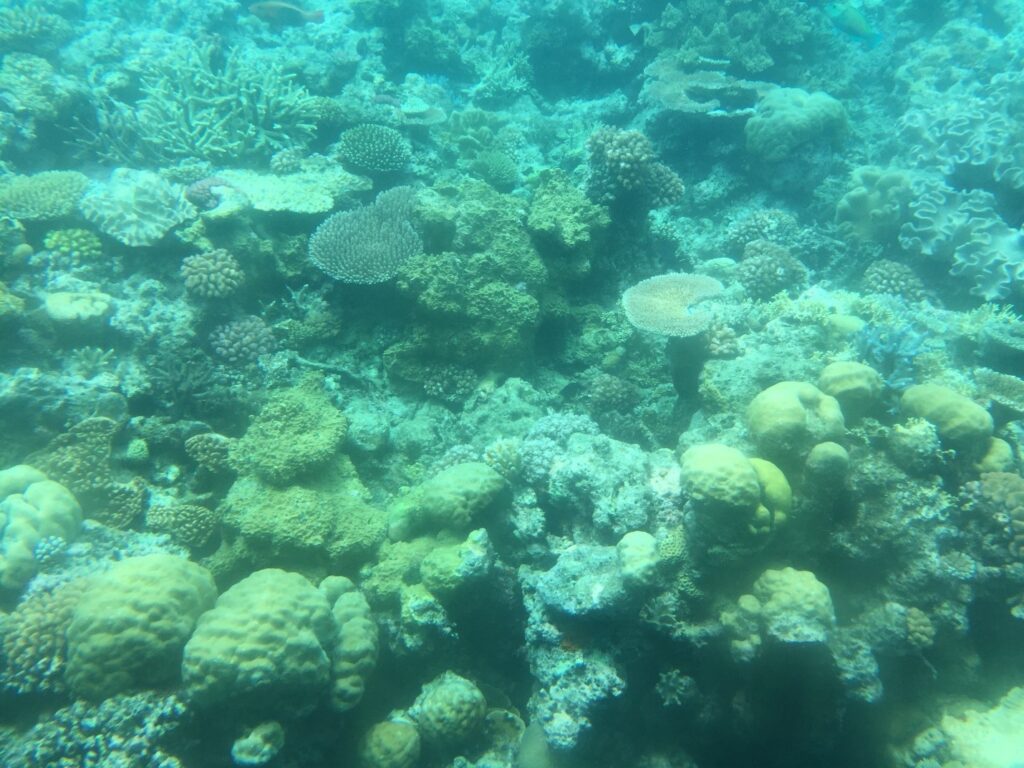
Travel Advice for Seniors: Port Douglas
Port Douglas and Cairnes are well-known as the jump off points to explore the Coral Sea and the Great Barrier Reef, both treasures and reason enough on their own to warrant a trip to Australia.
We chose to stay in Port Douglas as my husband had come to Australia separately and went on a live-aboard dive boat for a week on the Coral Sea and Great Barrier Reef. The plan was to meet up in Port Douglas and travel to Sydney together to celebrate New Years!
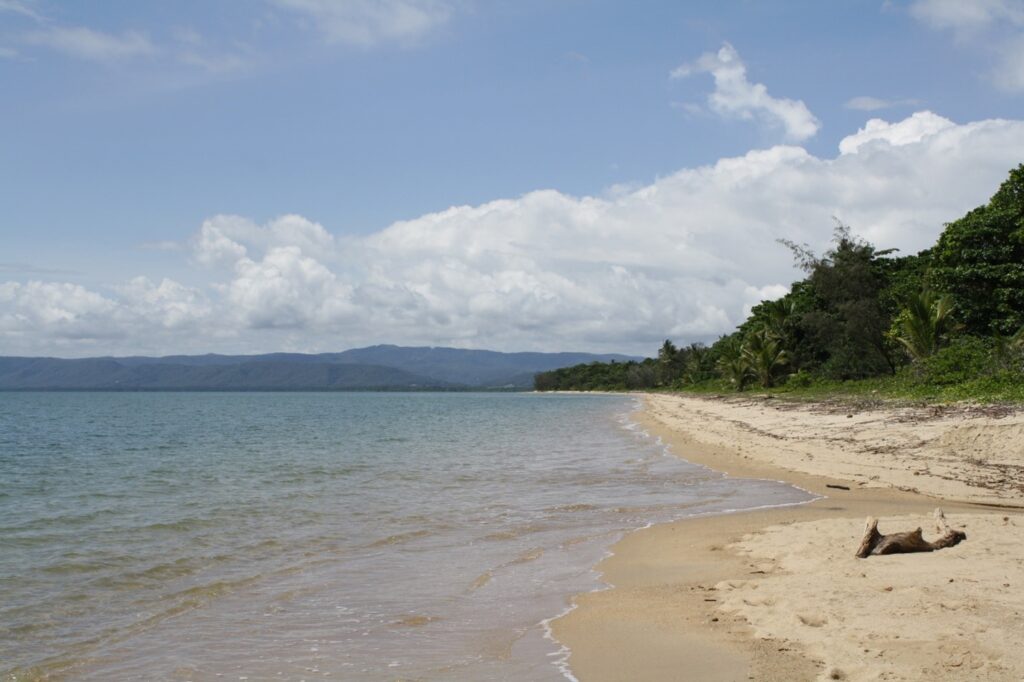
We arrived Port Douglas on Australia’s northeast side on Christmas day. Important note here: If you are traveling during a holiday, always make plans in advance for food and transportation. More than once we have relied on granola bars to get us through if we arrive too early or too late! This time we had arranged for delivery of a hamper of food, which was very welcome after the long flight from Uluru.
Port Douglas is a laid-back scenic town on the Coral Sea. It’s very popular in December and January as it is tropical summer in Australia at this time. It’s known for its beach resorts and its proximity to the Great Barrier Reef, the world’s largest reef system, and Daintree National Park, home to a biodiverse rainforest. Both are UNESCO World Heritage sites.
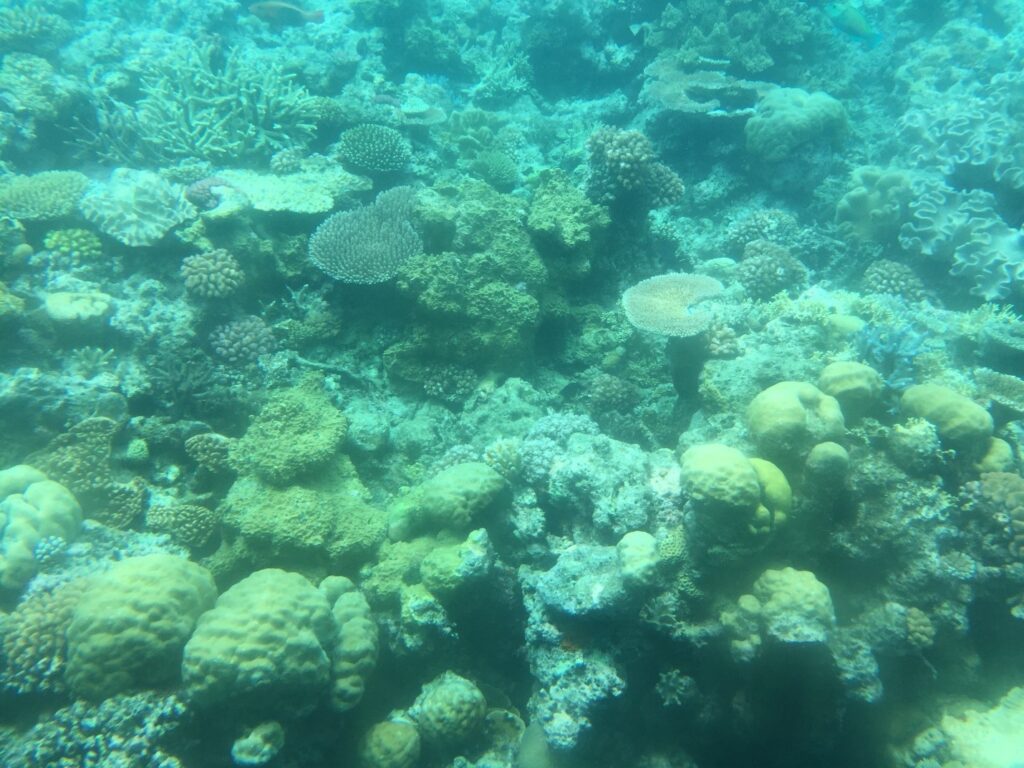
We had several day trips out of Port Douglas. The first was to the world-famous Great Barrier Reef. We were shuttled out to a permanent structure on Agincourt Reef, which is a group of ribbon reefs in the Great Barrier Reef, close to Port Douglas. The Agincourt Reef is one of the most pristine ecosystems in the Reef.
Our visit to the Reef included lunch on-site, all snorkeling equipment rental and a ride in a submersible. Mom is not a swimmer, so chose to sunbathe, however, I donned the snorkeling gear and headed out before the next boatload of tourists arrived. The water was a little cool, but the sights were amazing! The water is crystal clear, and the reef was indeed pristine. So colorful! The next boat of tourists didn’t know much about snorkeling, so thankfully they stayed close to the structure and didn’t stir up the water too much at the perimeter, so we had a chance to see the reef undisturbed.
Our second day trip was to Daintree Rainforest. We were a little ambivalent about this small-group day trip as it had some hands-on activities, but it ended up being a great experience mainly because our aboriginal guide was so engaging and enthusiastic.
The Daintree Rainforest is at least 135 million years and is the world’s oldest tropical lowland rainforest. It contains many unique plant and animal species found nowhere else in the world. There are still some self-sufficient people that still live in the rainforest. Parts of the rainforest are accessible.
We started with a walk at the Daintree Rainforest, which is partially accessible by wheelchair. A series of elevated walkways took us past the Mossman Gorge, mountain ranges, flowing streams, waterfalls and lagoons. Our guide delighted in telling us Aboriginal lore about the forest and the land, which was truly fascinating.
A bit on the aboriginal people: The original people of Australia came from Southeastern Asia via a land bridge about 49,000 years ago. With them came their stories of creation called the “Dreamtime”, which is the period of time when the Ancestral Spirits traveled across the land, shaping the landscape as they moved. Many of these legends include stories around the development of certain important geographical features.
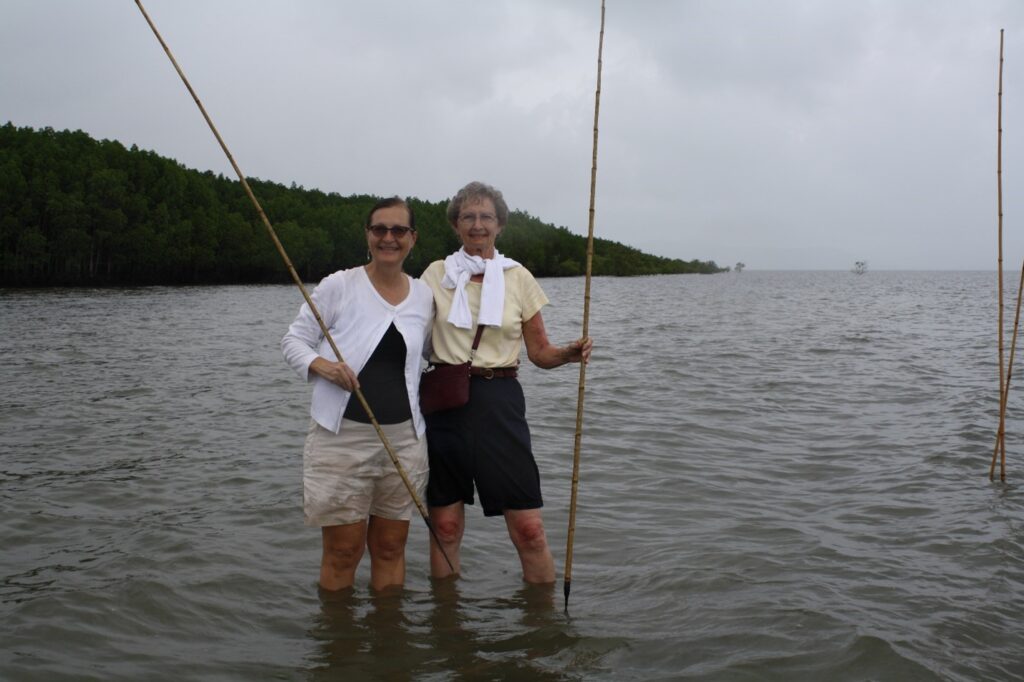
After our rainforest tour, we headed out to a more local area for a lesson in spear throwing, boomerang throwing, and went spearing for crabs in the mangroves. We also stopped by the guide’s mother’s house for a taste of some fruit and some special cake that she had made. A delicious treat! The day trip was noteworthy just to hear some of the Aboriginal lore and helped us better understand the importance of the preservation of this culture.
Australia has made great strides in recognizing the culture and sacred sites of the aboriginal culture. In fact, on Uluru, the “navel” of the country or red center, it used to be that tourists could walk up to the top, but no more, as it is a sacred site, and it is dishonoring the sanctity of the site by walking on it.
Our third day trip was a stop by Port Douglas Wildlife Park on our way to Sydney. This was a delightful stop. The Park is an eco-certified wildlife sanctuary which offers visitors the opportunity to interact with native Australian animals in their recreated environment. Accessible parking, most pathways, ramps and restrooms. Wheelchair rentals available.
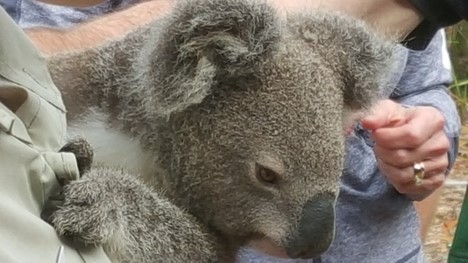
We were able to feed some kangaroos and wallabies and hold a precious Koala for a very few seconds, enough to snap a picture. As a sidenote, though they may look cuddly, they have long claws, and we had to wear a heavy cover to hold them. Also, in case you are wondering (and we asked), there was only one koala at a time being held maybe a total of six times before he was returned to eating and sleeping.
There were also Tasmanian Devils, crocs, a variety of birdlife and other native wildlife there. It was unique in that while you could interact with the animals, they were humanely cared for in a largish natural habitat and were not on display for feeding or photos constantly, but on a very limited basis.
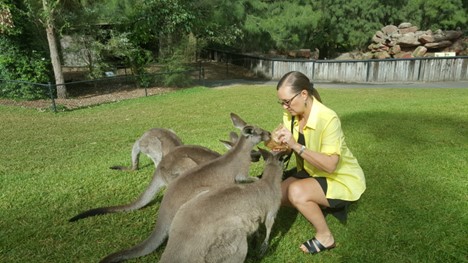
A word on Tasmanian Devils…the Tasmanian Devil is the largest living carnivorous marsupial. They used to live all over Australia but now are mainly on the island of Tasmania. Unfortunately, they have a type of face cancer that is fatal for them. Scientists are working on a cure for this, but so far one is elusive.
With Port Douglas in our rearview mirror, we were heading to Sydney to ring in the New Year in style!
Where we stayed: Villa San Michele. Centrally located, no breakfast included. Make sure you understand how the AC/Heat system works, we were unfamiliar with the inverter system.Accessible entrance, however some pathways may be steep or with steps. Accessible rooms available.
How we got there: Flew from Uluru to Port Douglas then private transport to hotel. This was part of a three-week private tour through Australia. We began in Melbourne and ended in Sydney for New Years’ Eve.
General Accessibility Information: See notes above. Major tourist sights, hotels and transportation in most major cities are accessible. Further, several hiking trails are accessible. See AllTrails’ wheelchair-friendly trail guide.Call in advance to verify and make specialty arrangements.See our sections on specialty apps and accessible travel for more on accessibility assistance.

